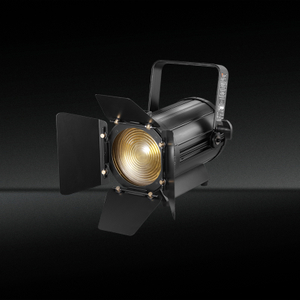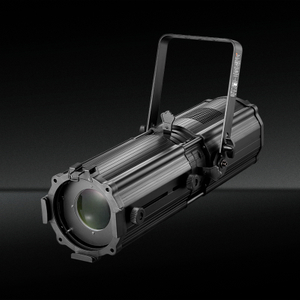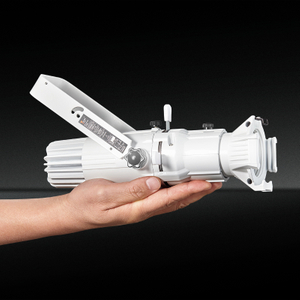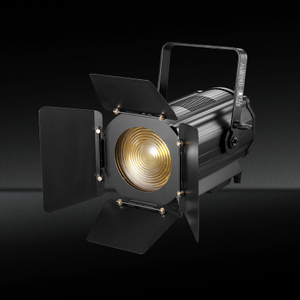What is the difference between LED and spot light?
Views: 2 Author: Site Editor Publish Time: 2025-07-10 Origin: Site








Lighting plays a crucial role in enhancing the atmosphere and functionality of both indoor and outdoor spaces. Two types of lighting that are commonly used are LED and spotlights, both offering distinct advantages and serving different purposes. While they may seem similar on the surface, these lighting technologies differ in several key ways. This article will provide an in-depth look at these differences, focusing on the features, applications, and benefits of both LED and spotlights, and explore how they impact our lighting choices in various settings.
What is an LED Light?
LED stands for Light Emitting Diode, a technology that has revolutionized the lighting industry due to its energy efficiency, longevity, and versatility. LED lights are made from semiconductors that emit light when an electrical current is passed through them. Unlike traditional incandescent bulbs, which produce light by heating a filament, LEDs generate light through the movement of electrons in a semiconductor.

Key Characteristics of LED Lights
Energy Efficiency: LED lights consume significantly less energy compared to incandescent and fluorescent lights. They can convert nearly 90% of the energy they use into light, making them highly energy-efficient.
Longevity: LED lights have an impressive lifespan, often lasting up to 50,000 hours, which is much longer than traditional bulbs. This extended lifespan reduces the frequency of replacements.
Durability: LEDs are solid-state lights, meaning they are more resistant to shock, vibration, and external impacts, making them ideal for environments where durability is a priority.
Low Heat Emission: LED lights emit very little heat compared to traditional bulbs, which not only makes them safer but also reduces the strain on cooling systems in homes and commercial spaces.
Versatility in Design: LED lights are available in a variety of shapes, sizes, and color temperatures, making them suitable for a wide range of applications, from residential to commercial lighting.
Applications of LED Lights
LED lights are used in a variety of applications, from everyday household lighting to specialized uses in displays, automotive lighting, and more. Here are some common applications:
Residential Lighting: In homes, LED lights are used for both general lighting and decorative purposes, such as under-cabinet lighting, recessed lighting, and track lighting.
Commercial Lighting: Offices, retail stores, and industrial spaces use LED lighting for both functional and aesthetic purposes. Their energy efficiency makes them ideal for these environments.
Outdoor Lighting: LEDs are used in streetlights, outdoor floodlights, and security lighting due to their energy efficiency and long lifespan.
Display and Signage: LEDs are commonly used in digital displays and signs, including billboards, traffic signals, and storefront signs.
What is a Spot Light?
A spotlight is a type of lighting fixture that is designed to focus light on a specific area or object. Spotlights produce a narrow beam of light, creating a concentrated effect that highlights a particular subject. Spotlights can be either stationary or adjustable, and they are often used to emphasize or create a dramatic effect on objects or spaces.
Key Characteristics of Spot Lights
Narrow Beam: The primary characteristic of a spotlight is its ability to project a narrow, focused beam of light. This makes them ideal for highlighting specific areas or objects in a space.
High Intensity: Spotlights typically produce more intense light than general lighting sources. This high intensity helps draw attention to specific areas or objects in a room or outdoor environment.
Adjustability: Many spotlights are adjustable, allowing the user to change the direction and focus of the light. This feature makes them versatile in highlighting different areas or objects as needed.
Various Forms: Spotlights come in various forms, including track lights, recessed lights, and portable units. They can be installed in ceilings, walls, or even used as free-standing units.
Applications of Spot Lights
Spotlights are typically used for accentuating or emphasizing specific areas or objects. Common applications include:
Theatrical Lighting: Spotlights are widely used in the entertainment industry, particularly in theaters and concert halls, where they highlight performers or specific parts of the stage.
Gallery and Museum Lighting: Spotlights are used to highlight artwork, sculptures, and exhibits in galleries and museums, drawing attention to key pieces without overpowering the surrounding space.
Architectural Lighting: Spotlights are often used to highlight architectural features, such as columns, statues, or building facades.
Security Lighting: Spotlights are used in outdoor settings for security purposes, as they can illuminate specific areas of interest, such as entrances or driveways.
Key Differences Between LED and Spot Light
While LED and spotlight lighting are both widely used, they serve distinct purposes and have different characteristics. Below are the main differences between these two types of lighting:
1. Light Distribution
LED Lights: LED lights are generally designed to emit light over a wide area, providing even illumination for a room or space. They can be used for general lighting and are often incorporated into overhead fixtures.
Spot Lights: Spotlights, on the other hand, produce a narrow, focused beam of light. They are specifically designed to highlight particular areas or objects, making them ideal for accent lighting or stage lighting.
2. Purpose and Functionality
LED Lights: LEDs are used primarily for general lighting purposes. They are versatile and can be found in a variety of settings, from home lighting to streetlights, and they are ideal for providing uniform illumination across larger areas.
Spot Lights: Spotlights are intended for accentuating or highlighting specific points of interest. They are used when a high-intensity, concentrated beam of light is needed to focus attention on a particular subject.
3. Energy Efficiency
LED Lights: LED lights are known for their excellent energy efficiency. They consume much less electricity compared to traditional incandescent or fluorescent bulbs, making them an eco-friendly choice for both residential and commercial lighting.
Spot Lights: While spotlights can be energy-efficient when using LEDs as the light source, traditional spotlight fixtures may consume more energy. Their efficiency depends on the type of bulb used and the design of the fixture.
4. Lifespan
LED Lights: One of the standout features of LED lights is their long lifespan. An LED bulb can last up to 50,000 hours, reducing the need for frequent replacements.
Spot Lights: The lifespan of spotlights depends on the type of bulb used and the frequency of use. Traditional halogen spotlights, for instance, may need to be replaced more frequently than LED spotlights.
5. Adjustability
LED Lights: Most LED lights are fixed in place and provide general illumination. However, some LED fixtures, such as track lighting, offer adjustable angles.
Spot Lights: Spotlights are highly adjustable, allowing users to focus the light on specific areas or objects. This makes them highly versatile for accent lighting and directional illumination.
6. Cost
LED Lights: LED lights may have a higher initial cost compared to traditional lighting options. However, their long lifespan and energy efficiency can make them more cost-effective in the long run.
Spot Lights: Spotlights can vary in price, with higher-end models featuring adjustable beams and advanced features costing more. However, spotlights can be more expensive than general LED lights due to their specialized functionality.
FAQs About LED and Spot Lights
1. Can you use LED bulbs in spotlights?
Yes, many spotlights use LED bulbs as their light source. LED spotlights offer the same benefits of energy efficiency and long lifespan as traditional LED bulbs but with the added benefit of focused light.
2. Are LED lights better than spotlights?
It depends on the application. LED lights are better for general, energy-efficient lighting, while spotlights are more suitable for accent lighting and highlighting specific objects or areas.
3. Can LED spotlights be used for stage lighting?
Yes, LED spotlights are increasingly used in stage lighting due to their energy efficiency, bright output, and ability to be adjusted for focus.
4. Are spotlights more energy-efficient than traditional lights?
Yes, spotlights, particularly those with LED bulbs, are much more energy-efficient than traditional incandescent or halogen spotlights.
5. Can spotlights be used for outdoor lighting?
Yes, spotlights are commonly used for outdoor applications, including security lighting and highlighting architectural features.
Conclusion
In conclusion, while LED lights and spotlights may seem similar in that both are widely used forms of lighting, they have distinct characteristics and serve different purposes. LED lights are energy-efficient, long-lasting, and versatile, making them ideal for general lighting needs. Spotlights, on the other hand, are designed to provide focused, high-intensity beams of light that are perfect for accentuating or highlighting specific areas or objects. By understanding these differences, you can make a more informed choice about which type of lighting to use in your home, office, or commercial space.





